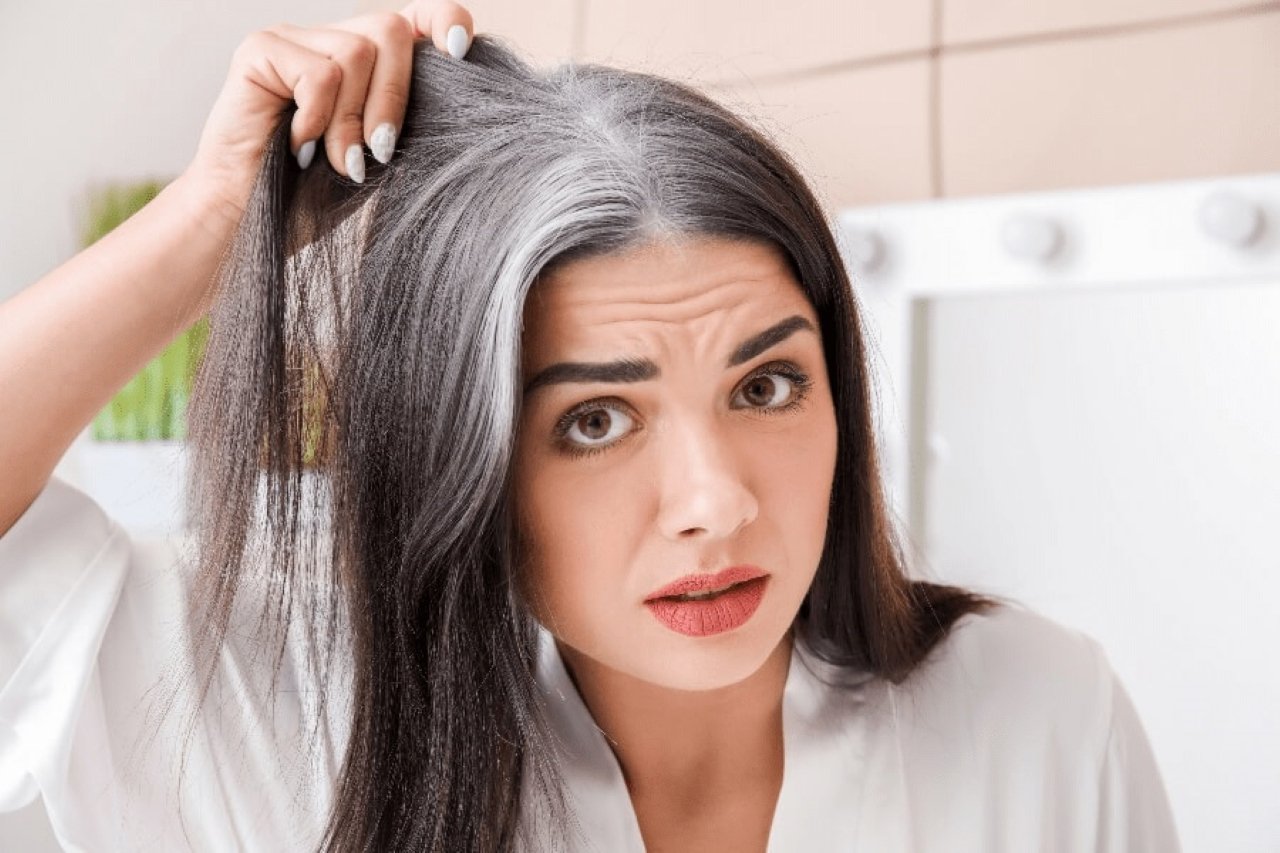Why Does Hair Turn Grey at a Faster Rate After the Age of 40?
Typically, greying hair due to aging is a manifestation of the body’s normal aging process. After 40, the melanocyte cells in the hair follicles begin to decrease, and our hair gradually turns grey.
However, during this stage, there aren’t usually many grey strands, and they often go unnoticed. But by the time you’re 50, the number of grey hairs will increase significantly, starting at the temples and advancing towards the crown and the back of the head.

Grey hair at 50 is normal and not considered premature aging, but if you have grey hair in your 40s, it could indicate premature aging. (Illustrative image)
Nonetheless, if you have a significant amount of grey hair at a young age, it’s not necessarily due to premature aging. It could also be a result of a lack of melanin-producing cells caused by prolonged stress and anxiety, leading to greying hair.
Deficiencies in trace elements such as vitamin B and iron can also cause hair to turn grey, and this condition can often be rectified through dietary supplementation.
Additionally, certain medical conditions can lead to the appearance of grey hair, such as pernicious anemia, tuberculosis, hyperthyroidism, and other common ailments, as well as skin disorders like vitiligo. Furthermore, there are rare cases where certain medications can contribute to hair greying.
To prevent premature greying, consider the following two factors:
1. Pay Attention to Hair Care
Firstly, ensure a well-balanced diet rich in vitamin B-complex and minerals like calcium, iron, and zinc. As long as your daily diet is balanced, you’re unlikely to experience greying due to nutritional deficiencies.
When it comes to personal care products, opt for reputable brands, and minimize the use of low-quality hair products, excessive dyeing, and styling treatments, as these can damage your hair and increase the likelihood of greying.
2. Don’t Forget Sunscreen
Many people don’t realize that sunscreen can help reduce the chances of hair greying. Typically, when the skin is exposed to excessive UV rays, the melanin production increases, resulting in a darker complexion.
However, prolonged exposure to UV rays can cause melanocytes in the hair follicles to migrate into the skin, turning the hair white. Therefore, to prevent premature greying, it’s essential to practice sun protection for your skin and hair.
In most cases, hair color will naturally fade after 40, and some grey strands are expected, which is not a sign of premature aging. The average age for noticeable greying is around 50, and by then, we may also feel other signs of aging in our bodies.
If you notice premature greying, it’s advisable to seek medical advice to identify and address any underlying health conditions that may be causing it.






































